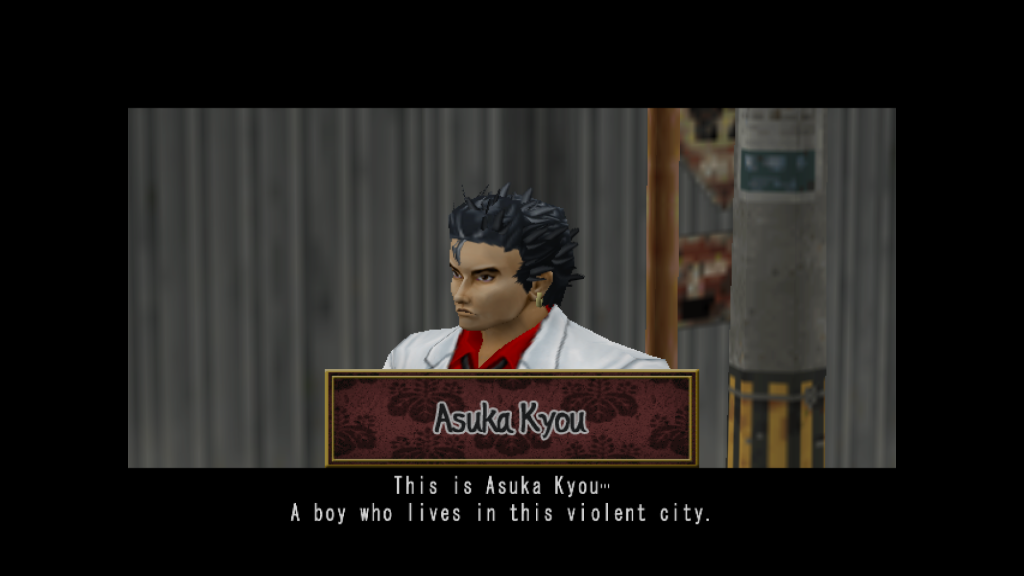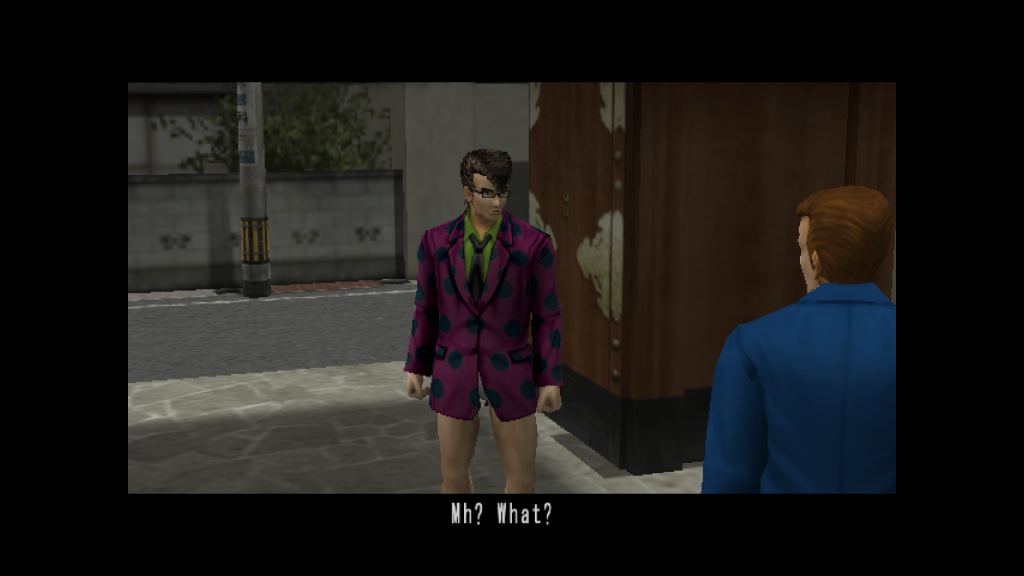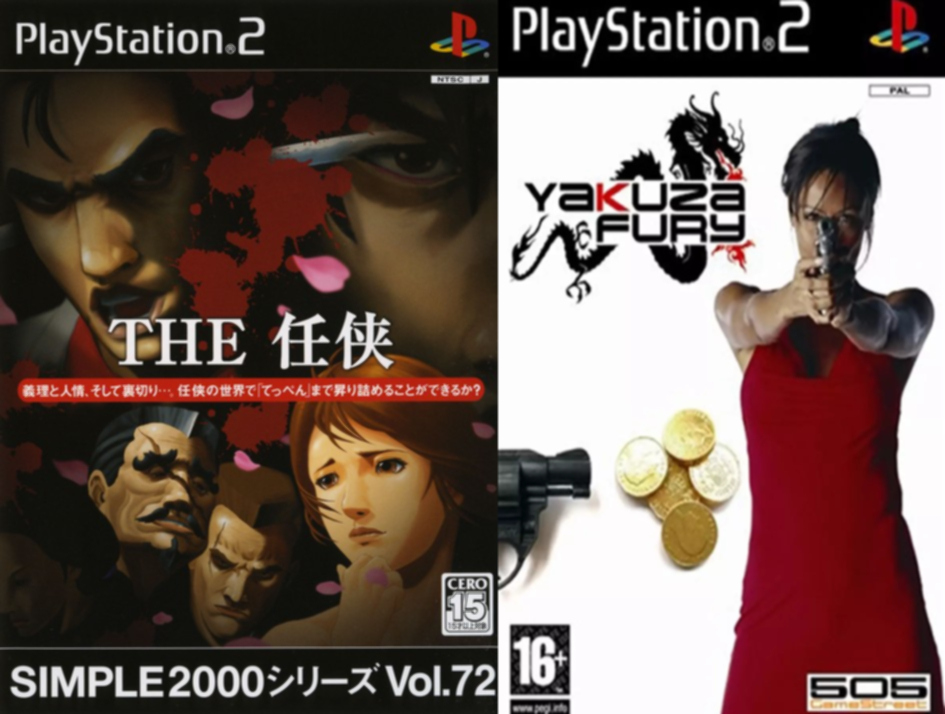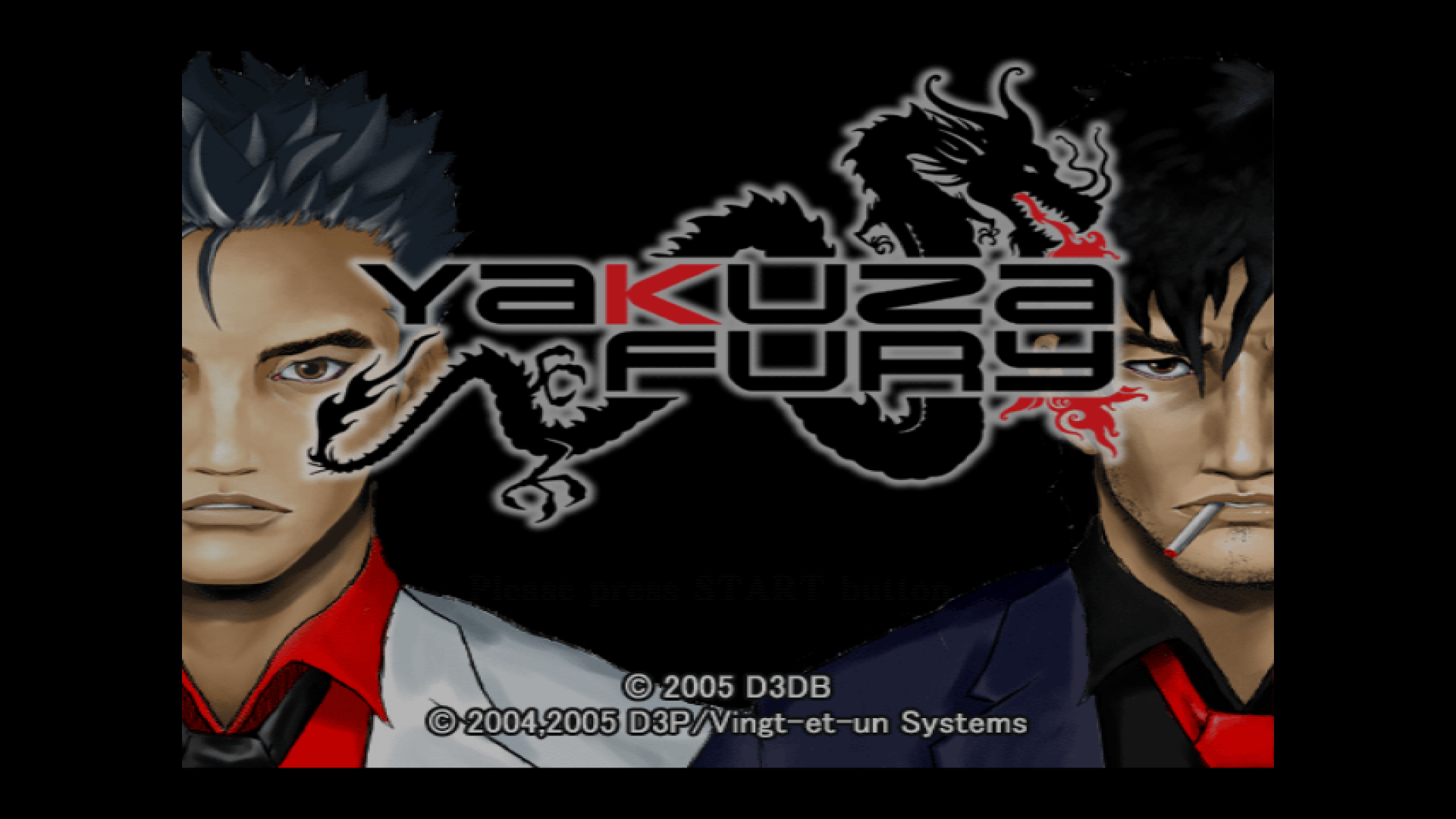I came across Yakuza Fury as many other people presumably have, via Reddit posts with titles like ‘Why does this game exist?‘ or Youtube videos with titles like ‘Dollar Store Kiryu‘. On the surface there’s no denying that this looks like a cheap knock-off of Sega’s Yakuza series. From the brawling action stages through to the spiky haired, white suit-clad protagonist…well, the charges basically file themselves don’t they?
But, to cut a long story short, Yakuza: Fury isn’t the cheap knock off awkward first impressions would lead you to think. Though the name of lead character Asuka Kiryu doesn’t exactly help, his story is much closer to a predictable gangster story line than the convoluted and openly political tale of his namesake. Falling in with the Yakuza after he helps a woman being assaulted in the street, Yakuza Fury’s plot is a predictably generic tale of mafia power struggles, with Asuka accidentally rising to the upper ranks of his clan after the leader is betrayed and assassinated from within.

In terms of gameplay, Yakuza: Fury also bears no relation to Sega’s series. Yes, there is brawling and the world IS sort of open, but the whole thing is much, much closer to the Kunio/River City Ransom series than it is Yakuza. Each play through is made up of 3-5 chapters, each stage starting in the open world. This world is constructed of about six 2d streets, though there isn’t really much to do in them aside from visit Yakuza HQ (where the action stages are generally launched from) and a single clothing/weapons shop. The only other thing you can really do in the open world section is talk to the fellow Yakuza who line the streets, with some offering helpful advice and others challenging Asuka to a fight.
Progression isn’t exactly logical: To unlock the next action stage, Asuka has to find and talk to a random Yakuza. Neither the character nor the story are linked to the story themselves, but you know when you see one because its generally a call to action like ‘Aren’t you late for the meeting?’ After that, you’ll generally return Asuka to Yakuza HQ , where you’ll watch a cut scene, entering a linear beat’em’up stage to fight a load of bad guys and beat a boss, watch another cutscene and then start the whole process all over again.
So what makes it worth playing? Well there are a couple of mechanics at play that raise this over the average. The first thing is the shop. The outfits you can buy aren’t just for show – each will have a dramatic effect on Asuka, either granting stat boosts like speed or entirely new abilities like blocking or the ability to pull off a running kick. What makes this really interesting is that Asuka has no traditional RPG development at all: his abilities are solely decided by the clothes he’s wearing, legitimately turning him into a create-your-own fighter – to the point of losing the default abilities he starts with! Fancied playing Streets of Rage II with the speed of Blaze and the strength of Max? Well now you can (even though a combo like that WILL come with consequences)

On top of that, the story is non-linear. Though it doesn’t explicitly explain it to you anywhere, the game has a hidden honour stat it tracks as you play. Fighting barehanded increases Asuka’s honour stats, while picking up and using weapons against unarmed opponents or picking fights with peaceful NPCs (even those lippy ones we mentioned before) can lower it drastically. Depending on his honour level at the end of each stage, Asuka will be shunted onto a different stage in the next chapter. If your honour rating it too low, you can even be shunted onto a bad ending route where Asuka is thrown out of the clan and ultimately tops himself. Yikes.
Considering a playthrough takes about two hours, This non linearity adds greatly to the replayability. Along with the normal stages, there’s a true ending that can only be achieved after beating the game once and an epilogue that can only be reached by finishing the whole thing while maintaining high honour throughout. If that wasn’t enough, then game features a ‘Double Justice mode’, which allows players to play as side characters and bosses (unlocked by playing through different routes in the story) and take on the game’s action stages as a straightforward two-player arcade brawler.
All in all then, Yakuza Fury’s an interesting one. To correctly contextualize it it’s worth pointing out that the game was always intended to be a budget game. Published in Japan by (the unfairly notorious) budget publisher D3, The Chivalry (as it was known locally) was part of their Simple Series of titles, a range that offered a reasonable amount of thrills for a price tag of around £12. It may not be massively long, but in 2005 terms a game that has plenty of unlockable characters, supports multiple playthroughs and and has a fun two player game is a relative steal at that price. Though relatively simple, the combat also has that satisfying OOMpf factor a beat’em’up needs – especially when you’re smacking people round the head with a weapon.
There’s no escaping that the game has problems though. Even when you factor in that ye olde games were less likely to fully explain themselves via dozens of stupid tutorial prompts, so many of the things the game refuses to explain to you just don’t really make any logical sense. There’s a hidden back entrance to the shop, for example, which leads to the same shop keeper but offers a different – and much more powerful – selection of items (thank goodness for Game Faqs!) Though the fight mechanics pack enough oomph, there’s a limited range of opponents and (unless you equip a particular item) it seems that poor Asuka has some sort of Vertigo condition that makes him Incredibly easy to knock down.
English players were also done dirty by what can charitably be called an absolute abomination of a localisation. Everything Western publisher 505 touched was made worse. The glorious comic artwork of the Japanese artwork was replaced with a 5 minute Photoshop. The full voicework of the Japanese version was removed entirely, leading to a cheaper-feeling experience. I don’t want to case aspersions on the Italy-based publisher, but the translated English script also feels suspiciously like it was translated by someone who was fully familiar with neither English nor Japanese. Though this makes the cutscenes a bit of a chore to sit through, it occasionally impinges on the gameplay itself , making it difficult to work out what some items in the shop will actually do.
Still, in a world with gamefaqs, none of grumbles mentioned above matter too much. If you go in to Yakuza Fury bearing the above in mind, you should find a cheesy b-game sort of experience that’ll provide you with some enjoyable violence for a couple of hours.

Where are they now?
As a relatively anonymous budget game, you probably wouldn’t expect the people involved to have had major effect on the industry, but lets look to see if that’s the case. On the institutional side, Japanese publish D3 continued to be known for both their budget wares (particularly the Earth Defence Force series) and otome (romance/visual novel) series – including the successful Vitamin games. When Midway games collapsed in 2009, D3 managed to snag the Cartoon Network license, releasing a number of licensed cartoon titles in the West based on the likes of Adventure Time and Ben10. Around the same time, however, Bandai-Namco snagged a controlling share of D3’s stock.
Fitting their ropy localisation, the history of Western publisher 505 Games has been a bit of a mixed bag. If you’re reading this in the UK, you might remember that back in 2013 their licensed game for the 2013 Ashes series staggered into the shops two months after the summer Ashes series ended, but was such a broken mess that it was cancelled days after release. A close collaboration with Starbreeze Interactive also didn’t quite deliver the quality of titles they hoped for, but 505 have found some success with the likes of quirky indie titles Abzu and Adrift along with (spiritual) Castlevania successor Bloodstained, heavily modifiable sim Assetto Corsa, Control and the PC/Xbox versions of Death Stranding. On the financial side things have been rough for them recently, however.
Developer Vingt-et-Un Systems are an interesting one. They continued to create budget titles for D3 both before and after the release of Yakuza Fury, but since 2010 they seem to have pivoted into being more of a support developer. If you’ve played a lot of Japanese action titles developed from 2016 you might have inadvertently sampled some of their work. We can say with certainty that they acted as support developers on both Star Fox Guard and the remake of Resident Evil 3.
When it comes to individual personnel, things are also a mixed bag. On the programming side, duo Kenji Teramae and Toshihiro Takaauga would only work on a handful of titles between them (including the PS2 port of Langriser III and The Adventures of Darwin), while musician Naotoshi Nishino – despite producing somewhat of a banging sounctrack for Yakuza Fury – would only go on to compose soundtracks for Adventures of Darwin and Special Forces. Others, meanwhile, would go onto to have prolific roles at D3. Series producer Nobuyuki Okajima has had a hand in dozens of games since the release of Yakuza Fury, including all of the Earth Defence Force games, while executive producer Yuji Ito went on to be the executive chairman of the company. Blimey.
Other members of the staff spread their wings further. Alongside their own budget Simple Series titles, D3 also produced titles for the Sega’s budget Ages 2500 Series and, about a year before Vingt-Et-Un created Yakuza Fury, they were tasked with remastering a classic Sega racer for the PS2, releasing it as Virtua Racing: Flat Out. A number of Vingt staff seem to have leveraged this association into getting a job at Sega. We can see, for example, that Miho Yamamoto went on to work on the original Sonic and Mario at the Olympics.
Of all the staff who worked on Yakuza Fury, the charactor designers seem to have traveled the best: Yasuaki Ikeda graduated over to Sega’s Yakuza series, undertaking design work on Yakuzas 3,4 and Dead Souls. They also worked on Binary Domain and Tekken 7. Takayuki Muranaka,meanwhile, has the most impressive CV of any Yakuza Fury alumni. Not only did they work as an animator on Metal Gear Rising: Revengeance, the three Bayonetta titles and the recent remake of Resident Evil 4, but they also worked as the animation lead on Mad World, Nier: Automata, Anarchy Reigns and Astral Chain, a project for they received a nomination for a NAVGTR award.
Overall then, this should teach us not to judge a book buy its cover. It’s very easy to frame Yakuza Fury as the butt of a joke, a pointless insignificant cash-in on a much better and more important series. However, Yakuza Fury is nothing of the sort. As a gamer it will offer an unpolished but refreshing gaming experience if you’re willing to make time for its eccentricities. From a historical angle, it might not be a key lynch pin, but it is nonetheless a small part of many fascinating industry stories.

